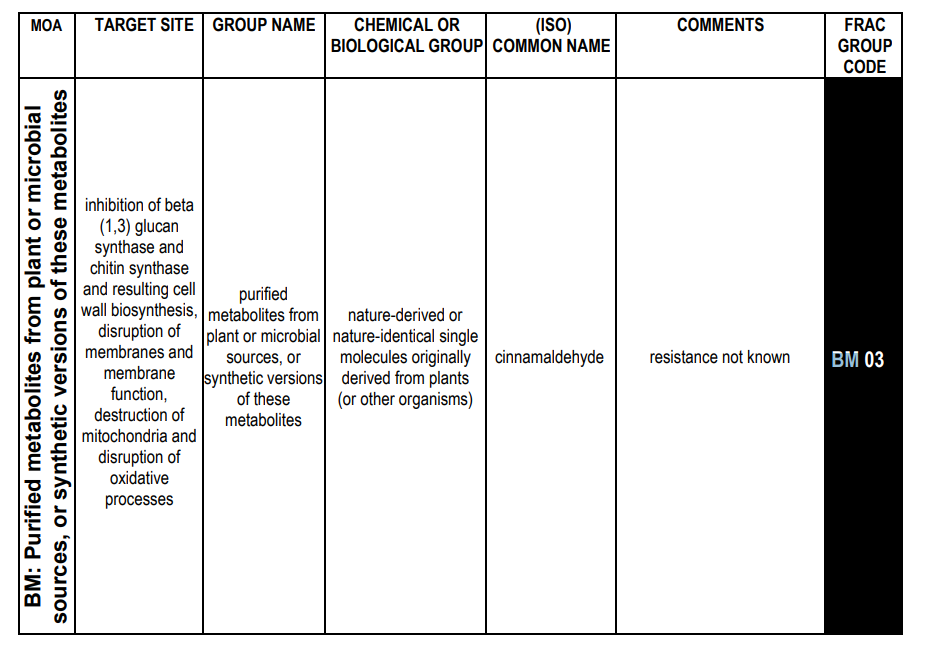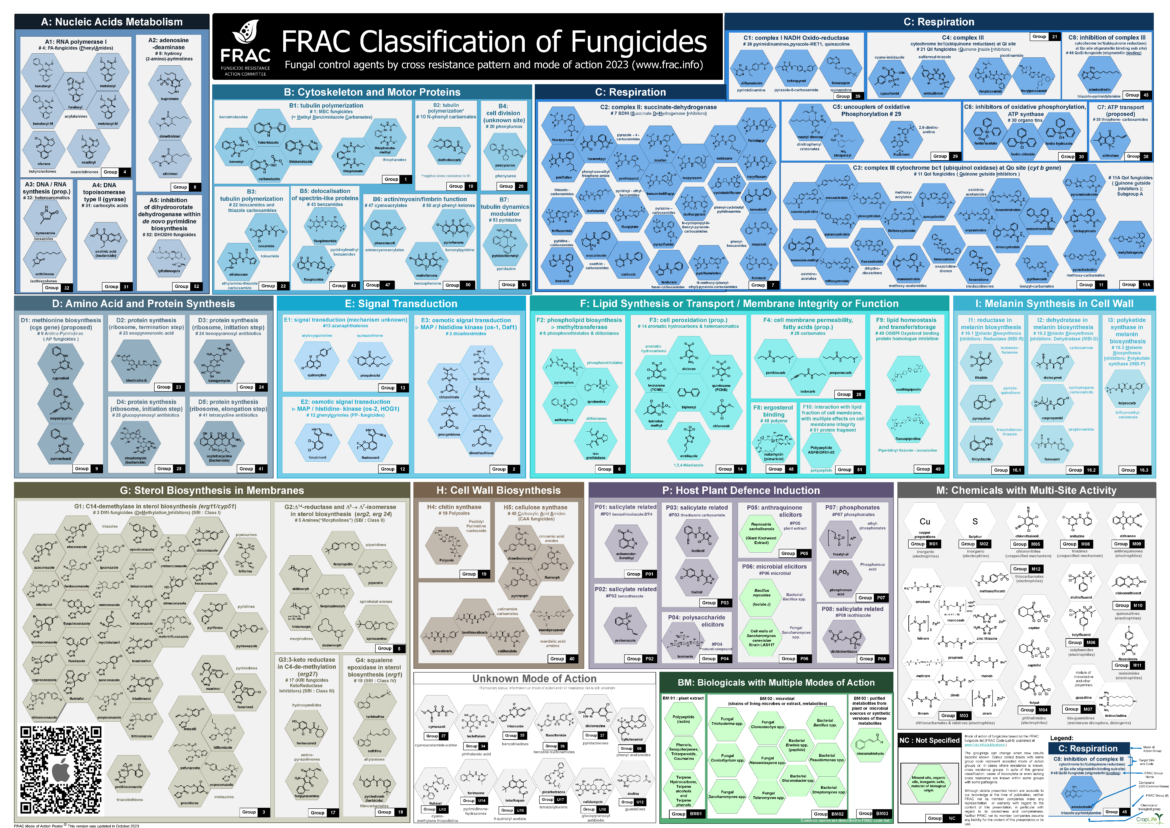- (ISO) COMMON NAME: Cinnamaldehyde added in FRAC 2023 poster new MOA Subclass as BM 03: Purified metabolites from plant or microbial sources, or synthetic versions of these metabolites.
- New BM MOA class “BM 03” has been added in New FRAC MOA poster Published 2023. The name of “BM 03” MOA Class is “BM: Purified metabolites from plant or microbial sources, or synthetic versions of these metabolites” where cinnamaldehyde compound is added.
- TARGET SITE: Inhibition of beta (1,3) glucan synthase and chitin synthase and resulting cell wall biosynthesis, disruption of membranes and membrane function, destruction of mitochondria and disruption of oxidative processes.
- GROUP NAME: Purified metabolites from plant or microbial sources, or synthetic versions of these metabolites
- CHEMICAL OR BIOLOGICAL GROUP: Nature-derived or nature-identical single molecules originally derived from plants (or other organisms).
The organization known as the Fungicide Resistance Action Committee (FRAC) was established by industry and research scientists to be an overseeing group to monitor fungicide resistance and provide guidelines for the development of products with long-term utility.
Fungicides have become an integral part of efficient food production. The loss of a fungicide to agriculture through resistance is a problem that affects us all. FRAC works to prolong the effectiveness of fungicides liable to encounter resistance problems and to limit crop losses should resistance appear.
This committee established the FRAC code, which identifies different target sites within specific modes of action for all active ingredients. Usually, there is a small rectangular box on every fungicide label where the FRAC number is located.
Different letters (A to P, with added numbers) are used to distinguish fungicide groups according to their biochemical mode of action (MOA) in the biosynthetic pathways of plant pathogens. The grouping was made according to processes in the metabolism starting from nucleic acids synthesis (A) to secondary metabolism, e.g., melanin synthesis (I), followed by host plant defence inducers (P), recent molecules with an unknown mode of action and unknown resistance risk (U, transient status, until information about mode of action and mechanism of resistance becomes available), and chemical multi-site inhibitors (M). Fungicidal compositions of biological origin are grouped according to the main mode of action within the respective pathway categories.
A more recently introduced category “Biologicals with multiple modes of action” (BM) is used for agents from biological origin showing multiple mechanisms of action.

FRAC_2023

FRAC-MOA-POSTER-2023


